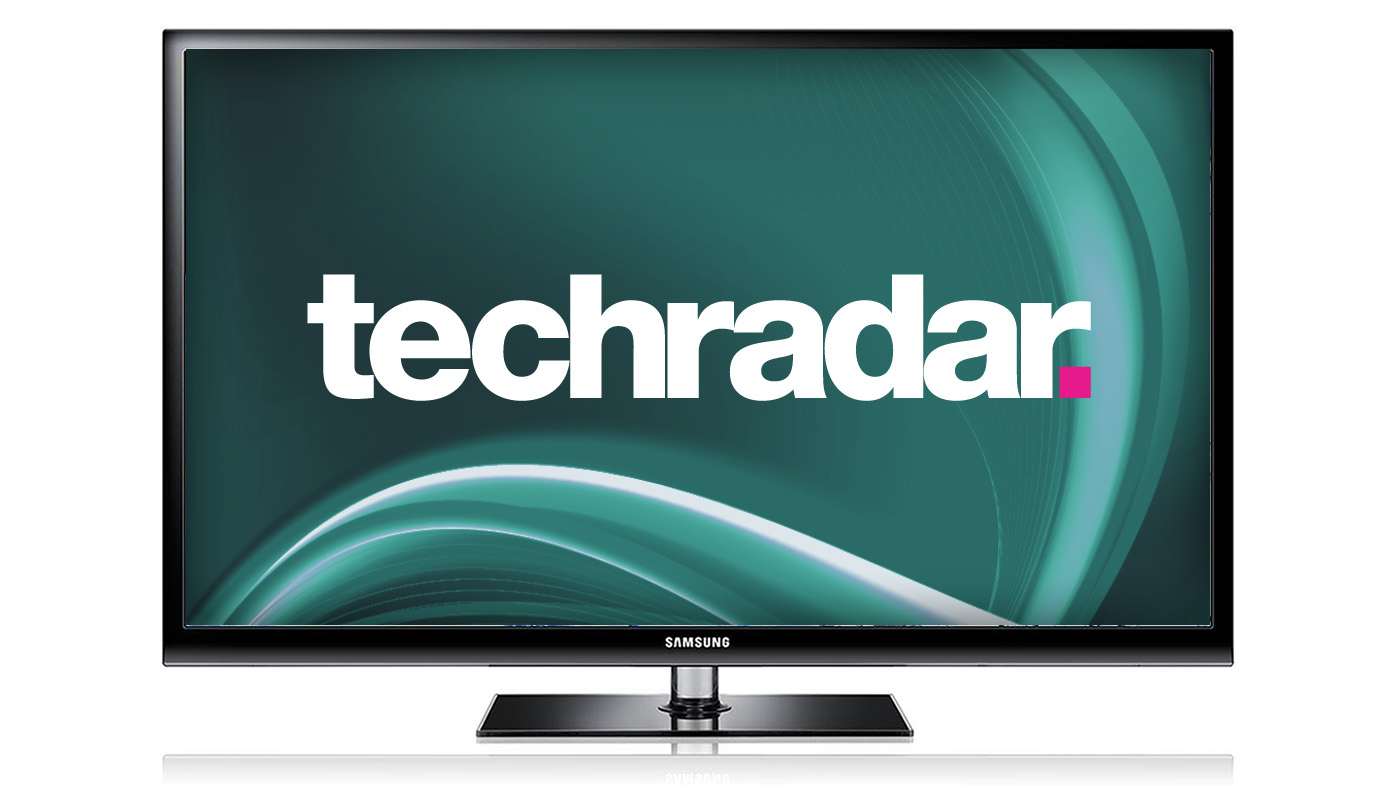TechRadar Verdict
Yes, you can get better plasma TVs if you spend more money, but so what? The Samsung PS51E490 is specifically designed for people who can't afford to spend more money
Pros
- +
Outstanding value for money
- +
Supports 3D playback
- +
Good HD/3D picture quality
- +
Decent audio
Cons
- -
No online features
- -
No integrated Wi-Fi
- -
Only two HDMIs
- -
Uninspiring standard definition
Why you can trust TechRadar
Even in a world where the big TV brands are falling over themselves to hit ever-lower price points for their products regardless of whether they're actually able to make any money out of them, Samsung's PS51E490 comes as quite a shock. After all, it's not every day you see a massive 51-inch plasma TV that can be yours for £799.99 / US$799.99 (around AU$1,157).
What's more, its striking screen size to price ratio isn't its only attraction. It also serves up, for instance, a surprisingly solid array of features, including multimedia playback via USB or networked PC, a built-in Freeview HD tuner, and even active 3D playback - complete with two pairs of free 3D glasses.
It's a bit lacking in the connections department, though, with its measly two HDMI ports, one USB port and no integrated Wi-Fi. It also doesn't carry any online features, so you can't access Samsung's wide-ranging and impressively presented smart TV service.
From a picture quality point of view, the Samsung PS51E490's cheapness means you have to make do without the high-contrast Real Black Pro filtering system employed by Samsung's more expensive plasma TVs.
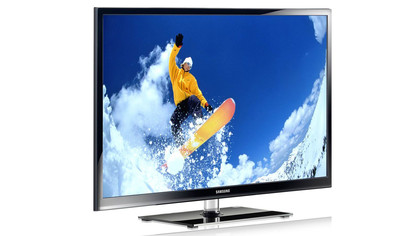
You also have to accept that its native pixel count is 1024 x 768 rather than a Full HD 1920 x 1080. This latter point could be a deal breaker in itself for some AV fans. But surely if you're only willing to spend £800/US$800 on a 51-inch TV, you know you're going to have to accept compromises somewhere, right?
If you do decide the compromises just discussed aren't for you, then the next series up in Samsung's plasma range is the E550 series, which introduce both Full HD resolutions and online functions, as well as an extra HDMI and USB port.
Step up higher still and you can get the Samsung E6500 plasma series, which crucially introduces the Real Black Pro filter with its pretty profound boost to contrast.
Sign up for breaking news, reviews, opinion, top tech deals, and more.
The Samsung PS51E490 also has a 43-inch smaller brother in the UK, the PS43E490, priced at £599.99 (around US$907 / AU$868), if you fancy a smaller screen. Many of you will want the bigger screen but won't actually have more than £800/US$800 to spend on a new TV, though. So let's find out if the Samsung PS51E490 still delivers real bang for your minimal buck.
Features
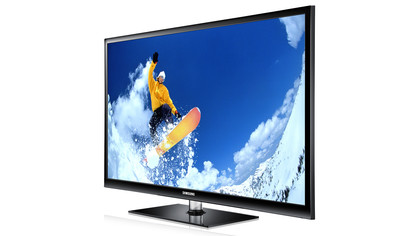
The most bare but intriguing facts about the Samsung PS51E490 are that it gives you 51 inches of plasma-generated pictures for just under £800/US$800. Couple this with the Samsung brand name, and you've already got a proposition with significant shelf appeal.
The Samsung PS51E490 doesn't depend solely on these star attractions for its appeal, though. For starters, it's not a bad looking TV provided you're able to see past the fact that it doesn't follow the current trend for ultra-slim bezels. Its dark finish is subtly but pleasantly alleviated by a gentle gradation effect, and its lines, while not especially imaginative, are quite dramatic.
Then there's the Samsung PS51E490's array of multimedia talents. A USB port, for instance, permits playback of a decent mix of video, photo and music file types, while a LAN port (Wi-Fi is only available via an optional extra USB dongle) enables you to stream the same sort of content from a networked PC. Plus, of course, you can simply connect a PC to the TV via a provided D-Sub PC port.
There is one disappointment here, though, since it transpires that the LAN port doesn't provide access to Samsung's smart TV online platform. This is a significant blow when you consider just how many extra video and multimedia services - including exclusive Fitness and family network zones - Samsung's smart TV delivers.
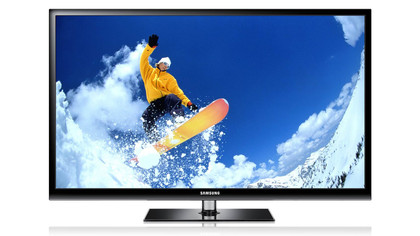
To be fair, though, it's inevitable that a TV as cheap as the Samsung PS51E490 will have to do without in some areas. Significant compensation for the Samsung PS51E490's missing online features comes from its support of 3D playback. This is of the active Full HD variety, and Samsung has even managed to ship two pairs of 3D glasses with its cut-price plasma television.
This is pretty embarrassing for the likes of Panasonic and Sony, who (respectively) only provide free glasses with their flagship TVs or don't provide any free 3D glasses with their TVs at all.
Heading into the Samsung PS51E490's on-screen menus, meanwhile, uncovers a surprising bounty of picture adjustments. Among the most unexpected calibration tools at your disposal are a Cell Light adjustor that gives you an extra means for getting the right balance between shadow detail, contrast and black level response.
Plus there are a few gamma presets to move between, a full white balance adjustment, MPEG and standard digital noise reduction filters, and multiple dynamic contrast settings.
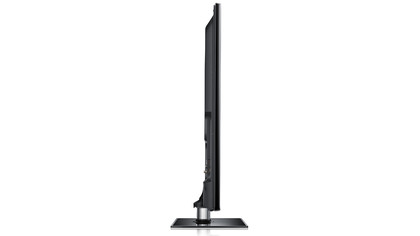
Although you can't adjust it via the on-screen menus, another good feature to find on a plasma TV as cheap as the Samsung PS51E490 is its 600Hz sub-field driving for enhanced image stability and motion.
We can't leave this section, though, without making you aware of a couple more potentially substantial compromises associated with the Samsung PS51E490's price point.
First and worst, it doesn't enjoy a Full HD resolution. Instead it gets an HD Ready 1024 x 768. For people who like the idea of mapping HD sources such as Blu-ray films to a screen on a perfect pixel for pixel basis, this reduced resolution could be a deal-breaker.
The other downer for film fans is the Samsung PS51E490's use of a Real Black panel design rather than the Real Black Pro design sported by Samsung's more premium plasma TVs. This essentially means that the Samsung PS51E490 lacks a contrast-boosting light filter sported by higher-end models, and so will likely not deliver the same sort of black level response.

John has been writing about home entertainment technology for more than two decades - an especially impressive feat considering he still claims to only be 35 years old (yeah, right). In that time he’s reviewed hundreds if not thousands of TVs, projectors and speakers, and spent frankly far too long sitting by himself in a dark room.
